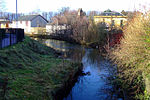Citizens Theatre

The Citizens Theatre, in what was the Royal Princess's Theatre, is the creation of James Bridie and is based in Glasgow, Scotland as a principal producing theatre. The theatre includes a 500-seat Main Auditorium, and has also included various studio theatres over time. The Citizens' Theatre repertory was founded in 1943 by dramatist and screenwriter James Bridie, author of some 40 plays presented in Britain and overseas, art gallery director Tom Honeyman, cinema impresario George Singleton, known by many as "Mr Cosmo", whose headquarter cinema continues today as the Glasgow Film Theatre, and Paul Vincent Carroll, whose plays were first performed at the Abbey Theatre, Dublin (founder W.B.Yeats) and later on Broadway, winning the New York Drama Critics' Circle award for Shadow and Substance (1938) and The White Steed (1939). Under the leadership of James Bridie (Dr O.H. Mavor), the Citizens Company was based at first in the Glasgow Athenaeum. It moved in 1945 to its present site, the then Royal Princess's Theatre (opened 1878), where the building became the Citizens Theatre.
Excerpt from the Wikipedia article Citizens Theatre (License: CC BY-SA 3.0, Authors, Images).Citizens Theatre
Gorbals Street, Glasgow Gorbals
Geographical coordinates (GPS) Address External links Nearby Places Show on map
Geographical coordinates (GPS)
| Latitude | Longitude |
|---|---|
| N 55.851 ° | E -4.253 ° |
Address
Citizens' Theatre
Gorbals Street
G5 9AF Glasgow, Gorbals
Scotland, United Kingdom
Open on Google Maps







